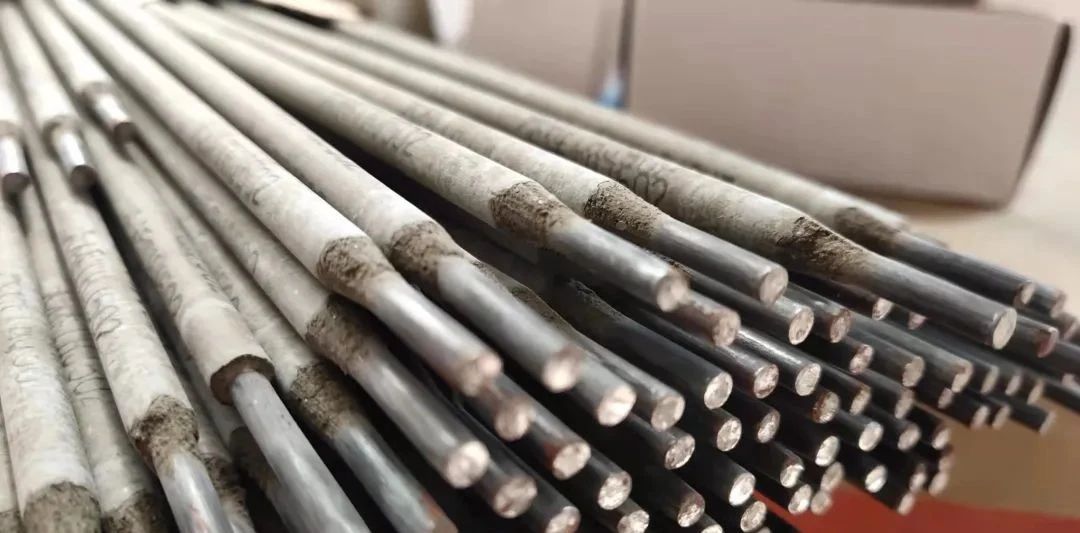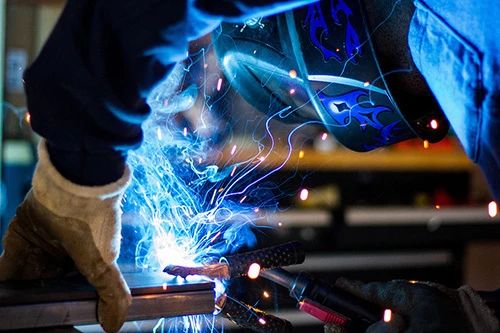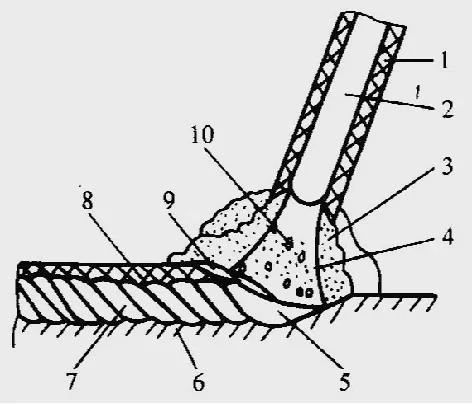The coating plays a role in complex metallurgical reactions and physical and chemical changes during the welding process, basically overcoming the problems of light electrodes during welding, so the coating is also one of the main factors that determine the quality of the weld metal.
Electrode coating: refers to the coating layer that is uniformly coated on the surface of the welding core by bonding fine-grained substances with different physical and chemical properties.

The role of the electrode coating: to form slag with suitable physical and chemical properties such as melting point, viscosity, density, and alkalinity during the welding process, to ensure stable arc combustion, to make the droplet metal easy to transition, and to be around the arc zone and molten pool Create an atmosphere to protect the welding area, and obtain good weld shape and performance.
It is also possible to add deoxidizers, alloying elements or a certain amount of iron powder to the coating to meet the requirements of weld metal performance or improve deposition efficiency.
Xinfa welding materials have excellent quality, please check for details: https://www.xinfatools.com/welding-material/

Electrode arc welding principle 1. Drug skin 2. Solder core 3. Protective gas 4. Arc 5. Melt pool 6. Base material 7. Weld 8. Welding slag 9. Slag 10. Droplets

Various raw materials can be divided into:
(1) arc stabilizer
The main function is to make the electrode easy to strike the arc and keep the arc burning stably during the welding process. The raw materials used as arc stabilizers are mainly substances containing a certain amount of easily ionized elements with low ionization potential, such as feldspar, water glass, rutile, titanium dioxide, marble, mica, ilmenite, reduced ilmenite, etc.
(2) Gas generating agent
The gas is decomposed under the high temperature of the arc, forming a protective atmosphere, protecting the arc and molten pool metal, and preventing the intrusion of oxygen and nitrogen in the surrounding air. Commonly used gas-generating agents are carbonates (such as marble, dolomite, magnesite, barium carbonate, etc.) and organic substances (such as wood flour, starch, cellulose, resin, etc.).
(3) Deoxidizer (also known as reducing agent)
Through the chemical metallurgical reaction in the welding process, the oxygen content in the weld metal is reduced, and the performance of the weld metal is improved. Deoxidizers are mainly iron alloys and their metal powders containing elements with high affinity for oxygen. Commonly used deoxidizers include ferromanganese, ferrosilicon, ferrotitanium, ferroaluminum, and silicon-calcium alloys.
(4) Plasticizer
The main function is to improve the plasticity, elasticity and fluidity of the coating coating in the process of electrode press coating, improve the quality of electrode coating, and make the surface of the electrode coating smooth without cracking. Generally, materials with certain elasticity, slipperiness or certain expansion characteristics after absorbing water are selected, such as mica, white clay, titanium dioxide, talcum powder, solid water glass, cellulose, etc.
(5) alloying agent
It is used to compensate for the burning loss of alloying elements during welding and to transition alloying elements into the weld to ensure the chemical composition and properties of the weld metal. Various ferroalloys (such as ferromanganese, ferrosilicon, ferrochrome, steel, ferrovanadium, ferroniobium, ferroboron, rare earth ferrosilicon, etc.) or pure metals (such as metal manganese, metal chromium, nickel powder, tungsten powder, etc.) can be selected according to needs. wait).
(6) Slagging agent
During welding, it can form slag with certain physical and chemical properties, protect welding droplets and molten pool metal, and improve weld formation. Raw materials used as slagging agents include marble, fluorite, dolomite, magnesia, feldspar, white Mud, mica, quartz, rutile, titanium dioxide, ilmenite, etc.
(7) Binder
Make the coating material firmly bonded to the welding core, and make the electrode coating have a certain strength after drying. Does not have a detrimental effect on the molten pool and weld metal during welding metallurgy. Commonly used binders are water glass (potassium, sodium and their mixed water glass), phenolic r
Post time: May-08-2023



